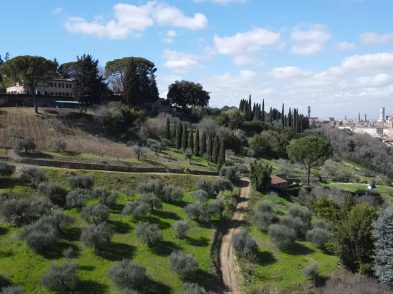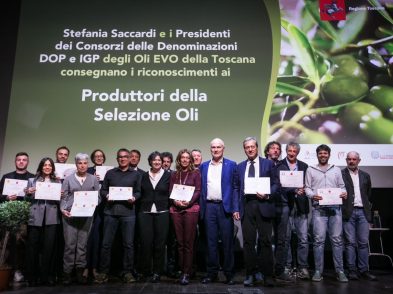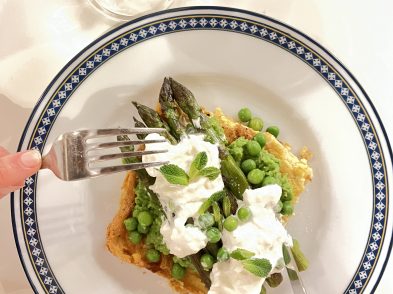Growing up around olive oil: “My grandfather and uncle made oil and always took me to the mill; it’s a world that has always fascinated me. Pressing olive oil was a time of celebration, an occasion to share family traditions. I’d peek through the windows of the restaurant next door and learn about aromas and flavour. At home, I’d smell and taste the bread, tomato sauce, ragù and roasted meats cooked by aunt Gabriella and grandma Evelina. How they cooked, handled ingredients and paired flavours was more interesting to me than any games. I went to A. Saffi catering college in Florence, worked at a few pizzerias and hotels before spending some time in Switzerland. The turning point came in Gordon Ramsay’s kitchens in London, which changed me profoundly, learning new techniques and ingredients I’d never heard of before. On returning to Italy, I worked at Villa Campestri and deepened my knowledge of extra-virgin olive oil.”
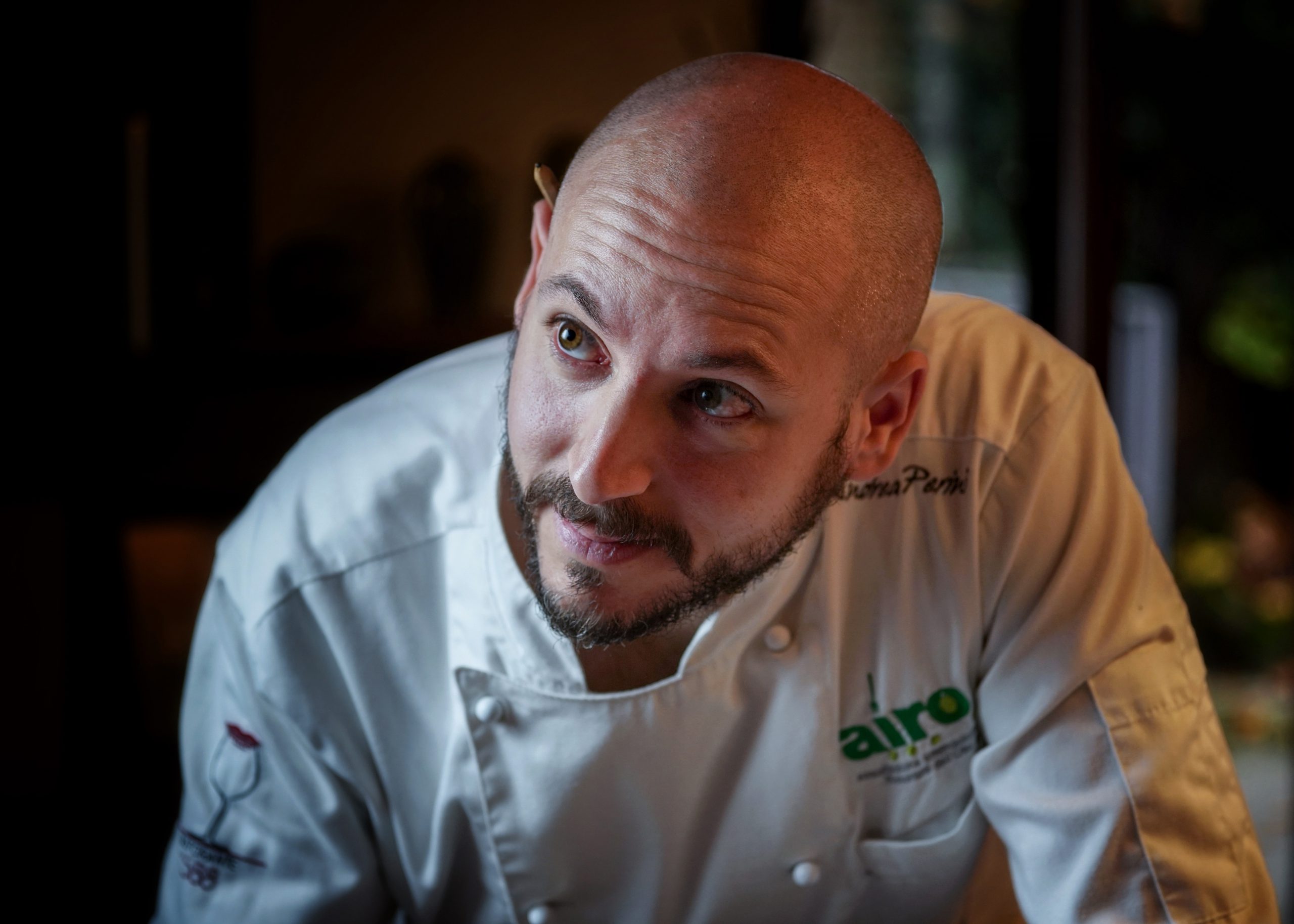
Chef Andrea Perini, of Al 588 Restaurant, ph. Luca Managlia from the book “Trentagocce”
Keeping things seasonal: “My cuisine changes with the seasonality of the ingredients, so sometimes dishes might only stay on the menu for 10-15 days. This is the case with ingredients centred on Lari cherries, Mugello chestnuts, Carmignano figs, bardiccio sausage, corbezzolo (strawberry tree fruit), galletti and prugnoli mushrooms, woodcock and game in general. I don’t usually re-propose the same dishes and often, if I do, I’ll try to add a variation, such as a different consistency or an element with a different cooking technique.”
On being the “extra-virgin olive oil chef”: “Extra-virgin olive oil is the starting point for every dish on my menu, playing with the various aromas and flavours of every Italian cultivar. My cooking is contemporary, yet rooted in the past with traditional references. Just like olive oil, which is ancient in origin, but is fluid, changing, perfectible and still somewhat little known. I love olive oil because there are so many aspects to it and multiple uses; it’s wholesome and culturally important as an expression of the land. I care about knowing the producers personally, learning about the regional uses of oil and incorporating this knowledge into my dishes. Some aromatic cultivars like Biancolilla and Nocellara lose their intensity in the spring, while Moraiolo and Coratina are very intense immediately after pressing, so they are best used with flavourful recipes. We focus on using extra-virgin olive oil in a raw state as well as substituting it for butter in our desserts, which are intensely flavoured but light and easily digestible, like my Tuscan kale doughnut with oil cream and caramelized olive: the oil butter enhances the bitterness of the kale.
The Recipe
Crude passioni – Raw passion
by Andrea Perini
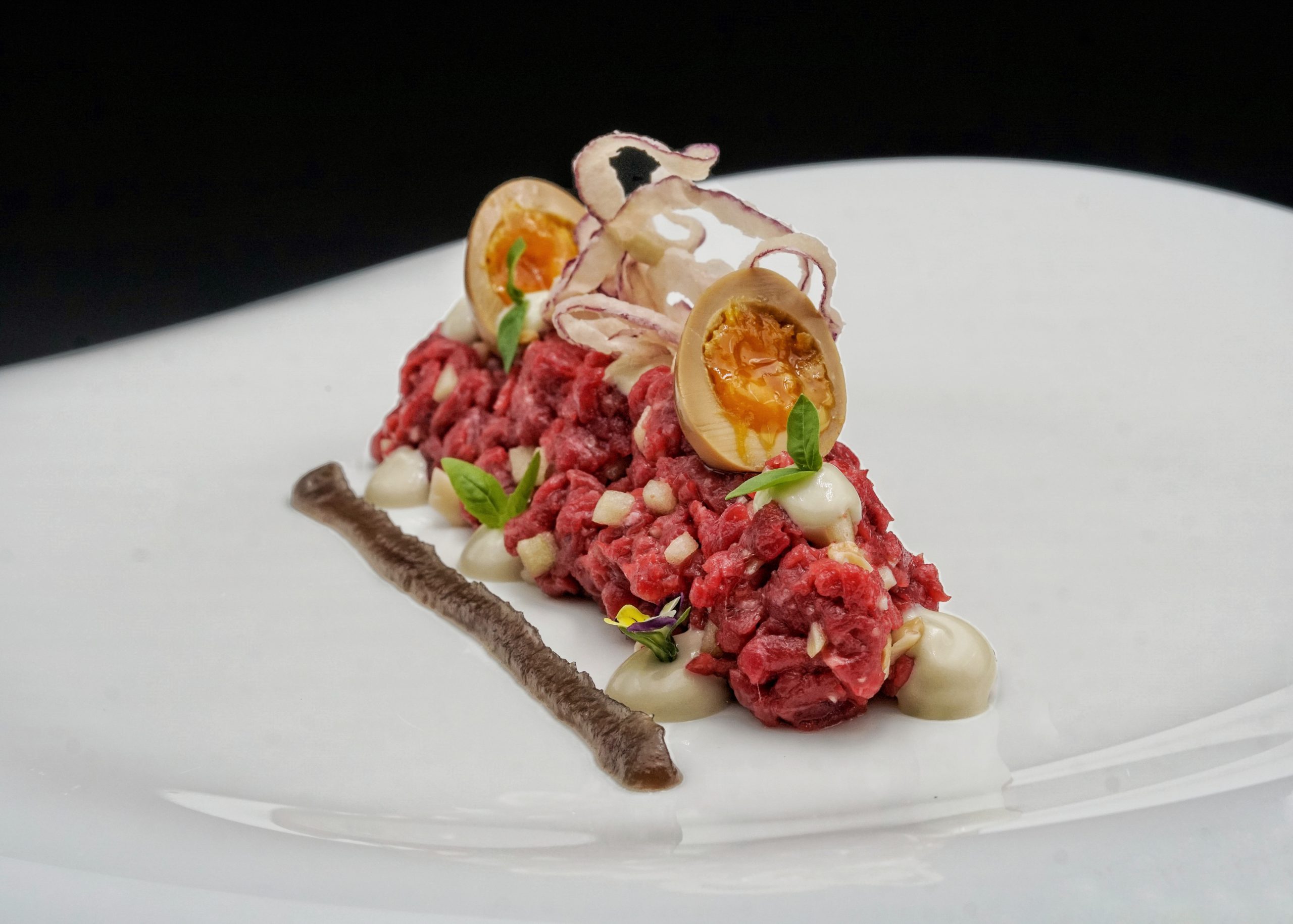
“Raw passion” by Andrea Perini, of Al 588 Restaurant, ph. Luca Managlia from the book “Trentagocce”
Ingredients
4 quail’s eggs
200ml soy sauce
500g red onions
180g oil
1 tbsp sugar
1 egg
280g fillet of beef
1 Granny Smith apple, peeled
1 stalk celery, finely chopped
10g pine nuts, coarsely chopped
50g rice flour
Fresh basil
Salt + pepper
Method
Boil the quail’s eggs for 2 minutes and 30 seconds when the water comes to a boil. Cool in ice water and peel the eggs. Let soak overnight in soy sauce, so that the eggs absorb the colour and flavour.
Cook all the onions except one in a frying pan with a drizzle of oil, salt and sugar. Cook for at least an hour, adding water as needed. Drain the onions, blend and pass through a sieve to make a puree. Use half of the onion puree to make an onion mayonnaise, beating the egg with oil and salt before adding the onion puree.
Chop the beef coarsely using a sharp knife with the peeled apple, celery and pine nuts. Dress with oil and season with salt and pepper.
Chop the remaining onion into thin rings. Dip in the rice flour and fry until crisp.
Serve the onion puree on one side of the beef and a few drops of onion mayonnaise on top. Garnish with the basil leaves and arrange the quail’s eggs, cut in half and dipped in oil. Top with the fried onion.
Oil pairing
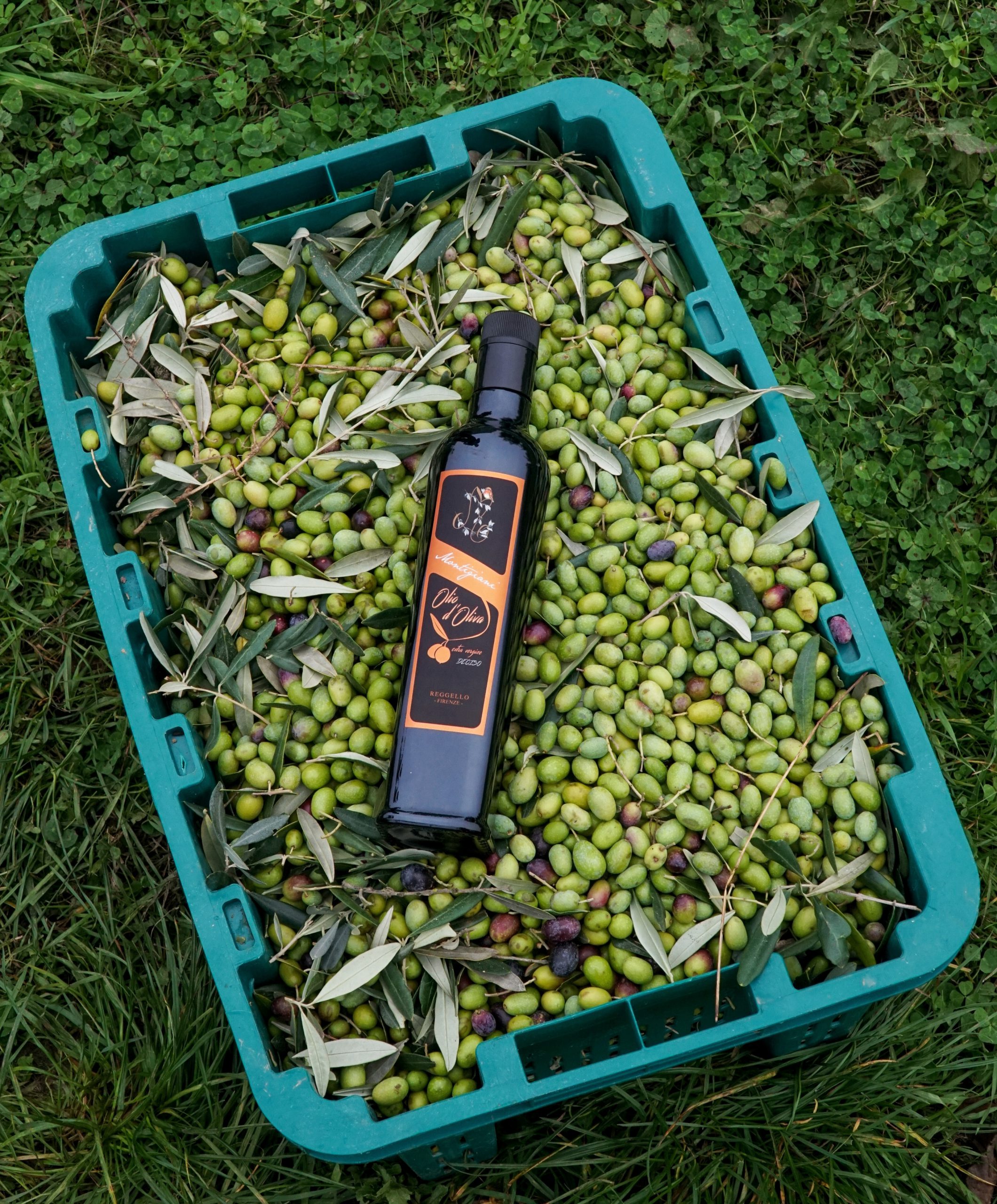
Out of the four selections made by Alberto Montigiani—Deciso, Delicato, Biologico and Diamond—the one chosen for this recipe, Deciso, is a blend of cultivars from the Reggello area (mostly Frantoio, Leccino and Moraiolo, plus a percentage of Pendolino), which yields a more structured and robust flavour. In this recipe, the piquancy gives substance to the taste of the raw meat and the bitter nuances contrast with the sweetness. The overtones of freshly cut grass and artichoke lift the aromas and the balsam flavours refresh the palate after the sweetness of the onions and savoriness of the egg.
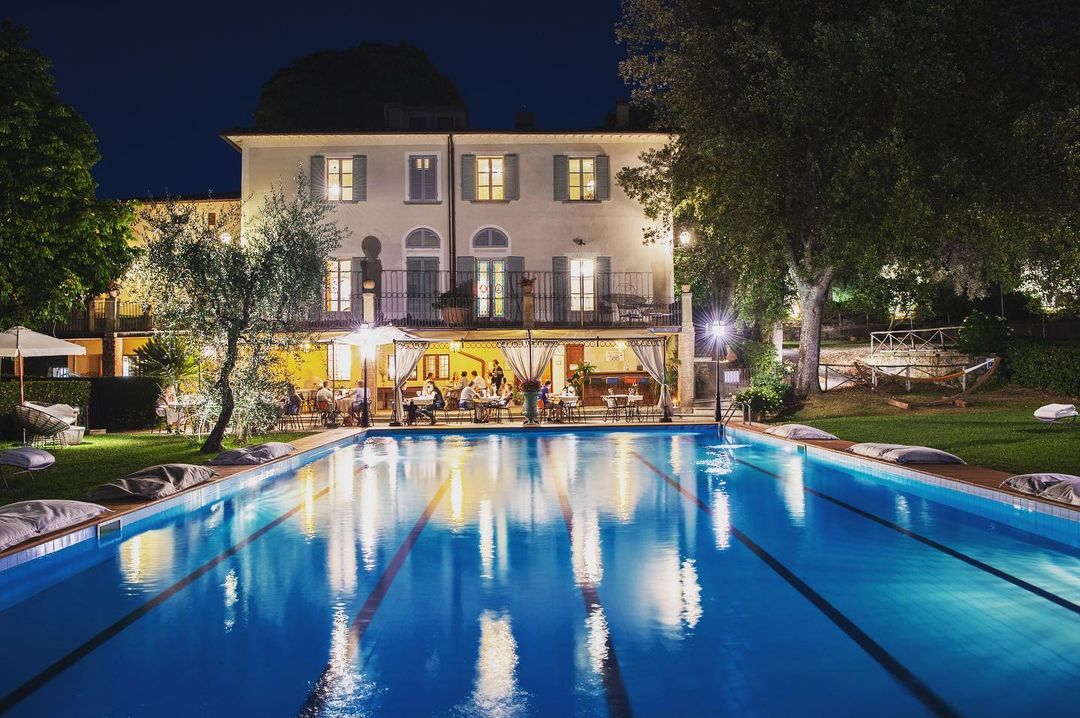
Al 588’s poolside location / ph. @francescapagliaiphotographer
Al 588
Via Roma 588, Bagno a Ripoli (Florence)
055 699059
IG: @ristoranteal588
Trentagocce: the book about Italian olive oil
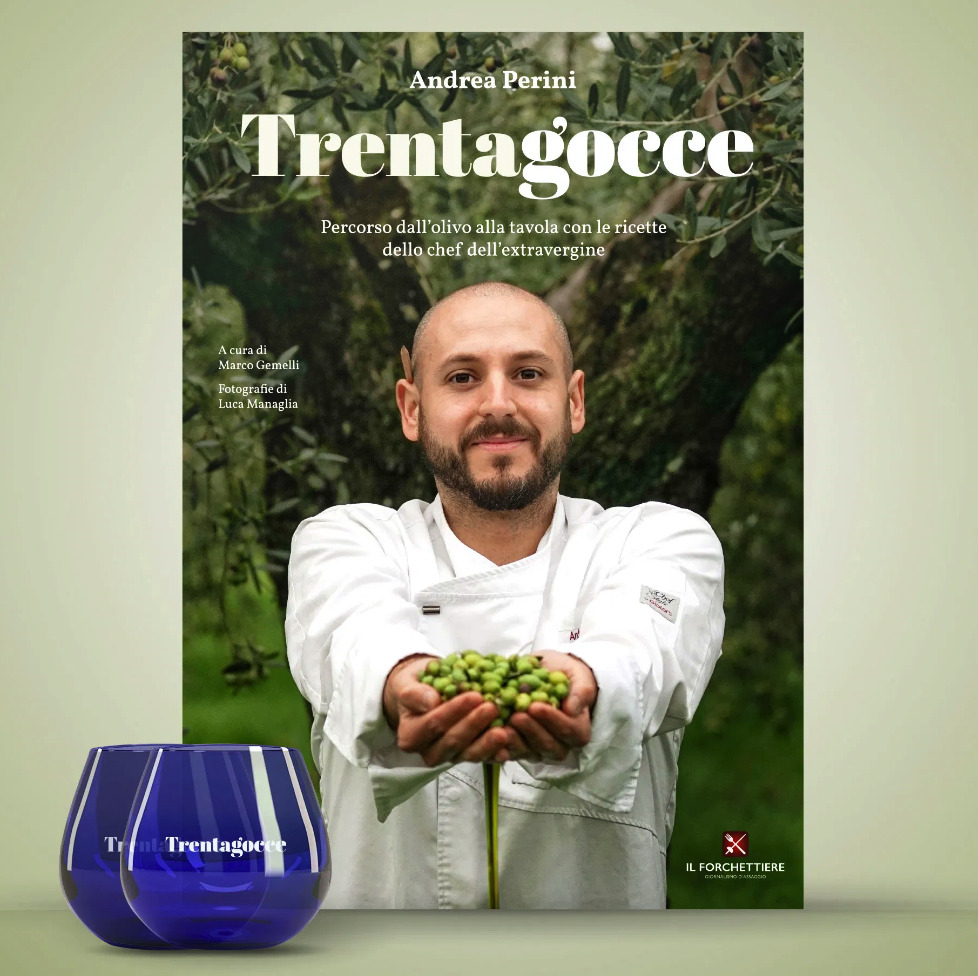
This recipe is an extract from Andrea Perini: Trentagocce, a deep dive into the world of Italian olives and olive oil. Edited by food journalist Marco Gemelli, this is far more than a recipe book with interesting essays by experts in the field, such as agronomists, professional olive oil tasters and educators, dieticians, blending consultants, glassmakers and bartenders. The 30 professsional-level recipes are beautifully presented with photography by Luca Managlia and reveal olive oil pairings from all over Italy, especially Tuscany, Sicily and Puglia. The 150-page hardcover labour of love ends with explanations about the various olive oil associations.
Trentagocce (Il Forchettiere, 22 euro; in Italian).
Order publisher-direct and receive an olive oil tasting glass (25 euro).



